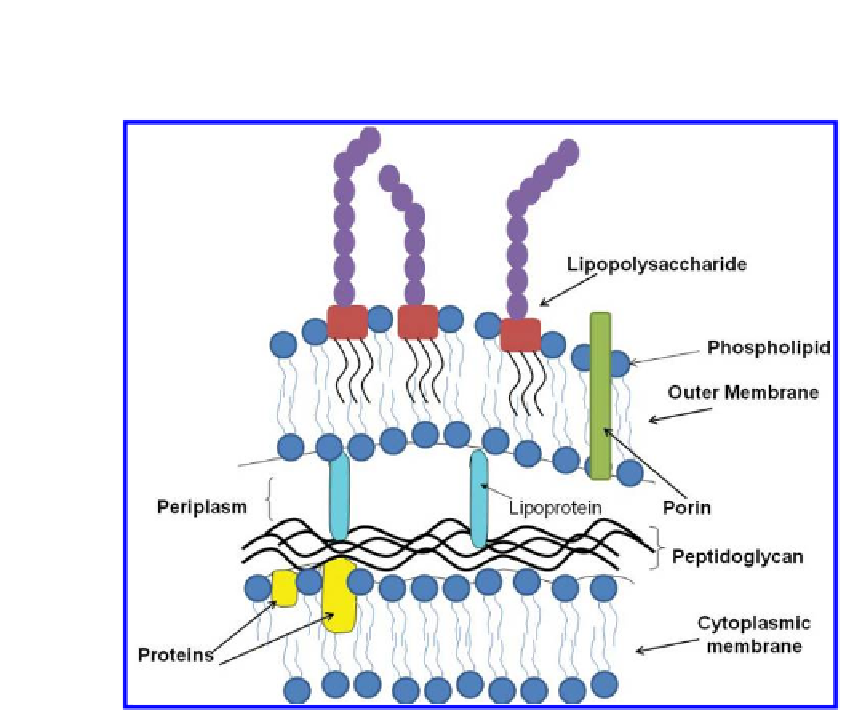Biology Reference
In-Depth Information
the microbe and the probe, or for measuring a speciic type of interaction,
such as ligand-receptor bonds.
Figure 13.1. Schematic of the outer surface layers of the Gram-negative bacterial
membrane, which include the cytoplasmic membrane and outer membrane.
A powerful approach for characterizing the elasticity of bacterial
biopolymers is to use AFM to stretch these molecules, and to model their
mechanical properties. This technique was irst applied to isolated and
puriied biomolecules, such as DNA and proteins. In an early experiment,
complementary strands of DNA were brought into proximity (one molecule
on the AFM probe, and one on the substrate surface), and after forming a
double helix, the molecules could be unzipped with AFM, giving rise to a
characteristic “peak” in the AFM retraction proiles.
2,3
The work was extended
towards the study of proteins, in which the AFM stretching causes a mechanical
denaturation of the macromolecule,
4,5
as well as for characterizing mechanical
properties of polysaccharides in isolation or in well-deined mixtures.
6-8
Applying polymer models to the macromolecules on bacterial cells can
be much more challenging, because one needs to be able to separate the
polymer properties from other effects due to the curvature of the bacterium,















Search WWH ::

Custom Search